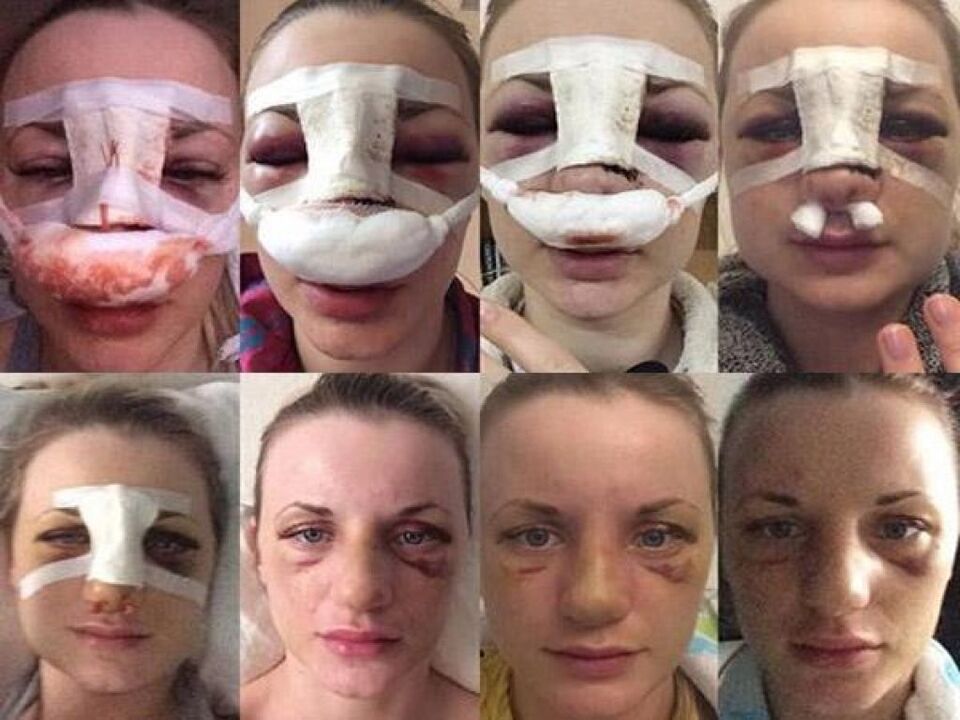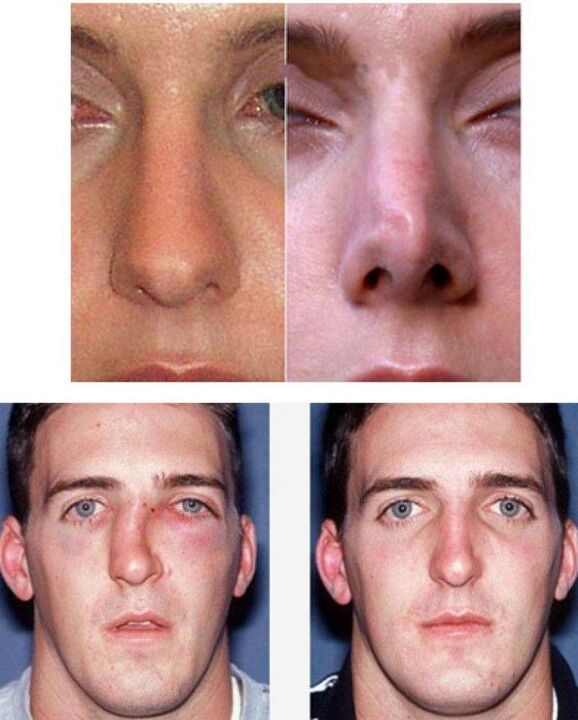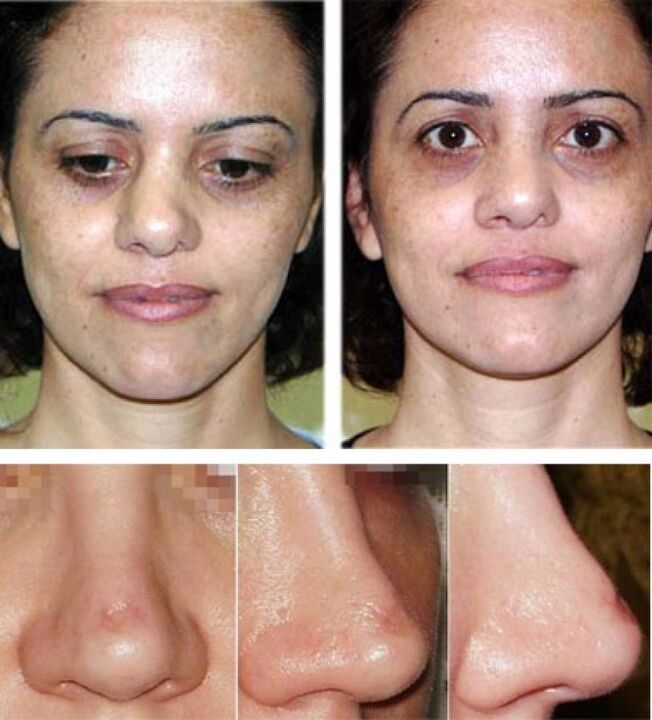Rhinoplasty is considered a major surgery. Often, the results obtained after rhinoplasty are not always what we want. And this already requires a second operation. If the rhinoplasty does not give the desired effect or aggravates the patient's condition, it will be considered a failure. It is necessary to approach it very responsibly. Misalignment of the shape of the nose, loss of smell, curvature of the septum, and excessive swelling with difficulty in the breathing process can be achieved. Therefore, before rhinoplasty, you should know that the result may be different from what you want.

Possible complications
Unfortunately, it is very difficult to predict how the rehabilitation will take place. Even the most experienced doctor will not be able to say exactly what the body's reaction will be. Therefore, it is believed that plastic is a jewelry business, and rhinoplasty is waterproof. Postoperative outcomes may be irreversible, and all possible risks should be sensitively assessed in preparation for such an intervention.
The most likely side effects of rhinoplasty are:
- bleeding from the nose;
- hyperpigmentation at the site of exposure;
- lymphatic and blood flow disorders that cause edema and hematomas;
- abscesses;
- bleeding in the operated and approximate areas;
- complete or partial loss of odor;
- difficulty breathing due to swelling of the mucous membranes;
- curvature of the nasal septum;
- excessive formation of scar tissue, which provides the formation of volumetric scars;
- inflammatory processes in soft tissues.
The occurrence of the above symptoms characterizes a failed operation.
Causes of complications
It is easier and safer for the body to know the causes of complications that can occur after plastic surgery and prevent them.
Lack of experience
The most common condition for side effects from rhinoplasty is the low specialty of the surgeon. Inadequate experience causes the doctor to ignore certain mandatory points. In addition, the impact of a small development of practical skills is possible. They are especially important in rhinoplasty. The nose has a very complex structure, and the slightest mistake, any wrong move can lead to irreversible consequences.
Wrong technique choice
An inexperienced doctor can definitely not make a mistake. Experienced surgeons also make mistakes, and this happens more often than we want. This is due to the availability of several techniques for rhinoplasty. Each of them is optimal for use in patients with certain anatomical features for any purpose. The wrong choice of technique for rhinoplasty can also lead to serious consequences that can not be eliminated in most cases.
Disorders of postoperative care
Successful plastic surgery is only half the positive outcome. The second part falls into the recovery period. In this case, the patient's behavior will be of great importance. Failure to follow medical advice can lead to edema, hematoma and the appearance of active scarring of the tissue. A plastic surgeon can generally give you a picture of exactly how rehabilitation will go and tell you what tools can help reduce it.
Patients often ignore the advice of a specialist before plastic surgery, based on the experience of friends or their own subjective feelings. And the result of this approach is the worsening of the condition, the appearance of pigmentation, persistent swelling and other unpleasant side effects characteristic of failed nasal plastics.

How to prevent complications?
Everyone prefers to prevent the problem rather than solve it. In the case of rhinoplasty, this is a completely and utterly correct decision. Minimizing the risks does not only help to achieve high quality results. This prevents side effects and makes recovery as easy as possible.
- Choosing a doctor and clinic. It is best to choose a specialist who has the opportunity to "get acquainted" with the "portfolio" live. This will help to see to what extent he is able to embody the wishes of patients, to form a general picture of professionalism. In addition, you can read the opinions of those who perform rhinoplasty at the selected clinic and from a particular doctor. To do this, you need to spend some time and try to find information about the surgeon, anesthesiologist in the reviews. When choosing, you should not be guided only by the reviews on the "native" site - they are usually moderated and not all can be published. Visual photographs before and after rhinoplasty will show excellent results.
- Drawing up the most accurate project. Modern medicine uses computer-aided design to help the surgeon better understand what the patient wants. By setting the basic parameters of the face, the program allows you to do the closest to natural correction. Thus, a person will be able to see how satisfied he is with the expected result of nasal plastic surgery. The doctor, in turn, can assess the feasibility of the procedure and, if necessary, suggest alternatives. However, it should be borne in mind that such a design is not always able to take into account all anatomical features and therefore does not guarantee complete compliance with the desired result.
- Strictly follow the recommendations before and after plastic surgery. Contrary to popular belief, preparation for intervention is very important. This helps to determine the degree of scarring during remission and predict the development of hematomas and edema. Therefore, you should consult your doctor before rhinoplasty and strictly follow all his recommendations. Postoperative care minimizes side effects by reducing pain, swelling and scars after rhinoplasty.

The result is completely visible after 6-8 months. Up to this point, small swelling and edema may appear and disappear from time to time. You should not panic before the term - lymph flow and blood flow are not restored immediately, and therefore side effects may appear after a certain period of time after rhinoplasty.

Re-correction
After plastic surgery, patients sometimes want to correct the shape of their nose. This allows, if possible, to restore the defects detected during failed plasticization.
This intervention has a number of complications. Repeated procedures after unsuccessful rhinoplasty are often more serious than the first. At this stage, the shape of the nose is corrected from the amount of tissue already present. And this can significantly complicate the task of the surgeon. This type of rhinoplasty does not guarantee the desired result. Therefore, you should first consult several doctors.
If the patient has small defects, corrective rhinoplasty is performed. It is performed using local anesthesia and can be nothing more than an adjustment to the completely finished version. Typically, these include nasal rhinoplasty and scar tissue removal.

Non-surgical correction is also performed in the absence of major abnormalities after a failed operation. It is performed under local anesthesia and may contain fillers. They help to "fill in", if necessary, formed indentations and irregularities, emphasize cartilage and correct angles.
The contour is also aimed at correcting the details of the nose. Involves the use of hyaluronic acid, which forms a special "frame" for the skin and tissues. With its help it is possible to correct the details, angles and asymmetry of the nose.
General recommendations
- Rhinoplasty is a very serious and responsible step. When you agree to the operation, you need to know that it is not possible to return everything to its previous state. Therefore, it is a very important psychological preparation to carry out the intervention and wait six months for the final result until the edema disappears completely.
- The choice of clinic and surgeon plays a very important role in performing high-quality nasal surgery. You should read the reviews online before going to the meeting. The more information available before rhinoplasty, the easier it will be to decide. You should not pay attention to loud advertising - it often hides low professionalism, many additional mandatory paid services, and is not the best attitude to customers.
- At the initial consultation, you should try to describe to the doctor as accurately as possible the desired outcome of plastic surgery. This will help him navigate better and create a "work front". The surgeon's understanding of the desired outcome helps to achieve the most accurate result. Most likely, a simple rhinoplasty of the tip of the nose will suffice, not a full-fledged intervention.
- An experienced surgeon will definitely clarify the presence of respiratory problems, allergic reactions, past illnesses and medications taken. This helps to create the most complete clinical picture, on the basis of which it is possible to choose drugs and methods of action during rhinoplasty. It should be noted that if the doctor does not specify such information, it is a very alarming sign, which is typical of low-skilled professionals.




















